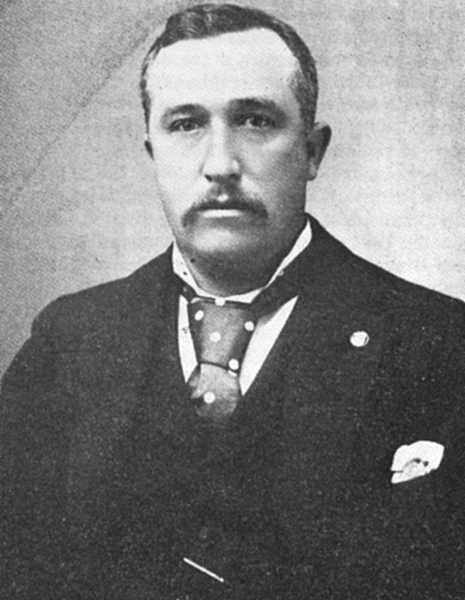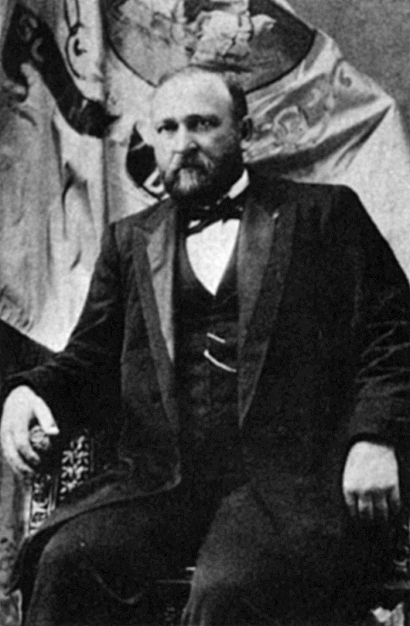The Gift of South Dakota
Subscriptions to South Dakota Magazine make great gifts!
Subscribe today — 1 year (6 issues) is just $29!
Treachery in the Treasury
Dec 30, 2014
William Walter Taylor (or Walter William Taylor, depending on which records you consult) seemed like a stand-up guy when he arrived in Redfield in 1885. That’s why his friends, co-workers and thousands of South Dakotans were shocked when they learned that Taylor — as the state’s treasurer in January 1895 — had taken $367,000 of the state’s money and fled to Latin America. It put the young state in a precarious financial position, but it also adversely affected the lives of those close to Taylor, particularly Arthur C. Mellette, the former governor and one of the fathers of South Dakota.
 |
| William Walter Taylor became the most wanted man in South Dakota when he absconded with $367,000 from the state treasury in 1895. |
Taylor came to Redfield from Lafayette, Indiana, where he had worked with his father in the wholesale and retail coal business. He became president of the First National Bank and the Gettysburg State Bank and general manager of the Northwestern Mortgage Trust Company. Taylor was elected state treasurer in 1890 and was re-elected in 1892. Facing term limits, he was forced to relinquish control of his office after the 1894 election.
On the surface, the state’s financial situation appeared solid. Records indicated deposits of well over $200,000 at Taylor’s bank in Redfield. But in reality, Taylor had fallen victim to the financial Panic of 1892 and its aftermath. He’d lost $232,000 through the failure of his trust company, a South American mining venture, wheat speculation and real estate investments in several states. On Jan. 9, 1895, the day Taylor was to turn over control of the treasury to his successor, he failed to appear in Pierre. He was gone, along with $367,020.59 of the state’s money.
Fortunately banks, businesses and South Dakotans themselves came to the state’s aid. Two banks in Deadwood offered $75,000 loans. Two railroad corporations paid their property taxes in January, two months before they came due. The state auditor raised $40,000 by asking county treasurers to submit anything they owed to the state and the legislature authorized the new state treasurer to sell $98,000 in bonds to make up the shortfall.
Attorney General Coe Crawford was hot on Taylor’s tail. He asked the legislature to offer a $2,000 reward for information on his whereabouts and he hired the famous Pinkerton Detective Agency. They pursued Taylor on a long, winding journey that began in Chicago and meandered through Key West, Havana, Vera Cruz, up the Mexican coast, back through Guatemala, Nicaragua and Costa Rica and, finally, the United States.
Taylor was eventually apprehended, and the state recouped about $100,000 from him. The rest had to come from several bondsmen who had vouched for Taylor’s veracity. Among them was South Dakota’s first governor, Arthur Mellette.
Mellette had done as much as any man to shepherd South Dakota to statehood in 1889. He served as the last governor of Dakota Territory and presided over state constitutional conventions in Sioux Falls. When South Dakota was finally granted statehood, he was easily elected the new state’s first governor.
 |
| Arthur Mellette, South Dakota's first governor and a founding father of the state, was financially ruined by Taylor's shenanigans. |
As his second term came to a close in early 1893, Mellette was already suffering health problems. The financial scandal of 1895, and Mellette’s responsibility to keep the state solvent, left him a physical, emotional and financial wreck. He turned over all his assets to the state, including his handsome brick home atop Prospect Hill in Watertown. The Mellettes moved to Pittsburg, Kansas, where the former governor died in May of 1896.
The state eventually returned to home to Mellette’s widow, Margaret, after it was determined that Mellette’s debt had been settled, but the damage to her husband and family had been done. The Mellette House remains open for tours today, a reminder of the man who sacrificed so much for his state.
After serving 18 months in penitentiary, Taylor moved to Chicago, where he became involved in several business ventures, none of which proved lucrative. He died of alcoholism in New York City in December 1916, a shadow of the promising young banker who had ridden the rails into Redfield 30 years earlier.










Comments